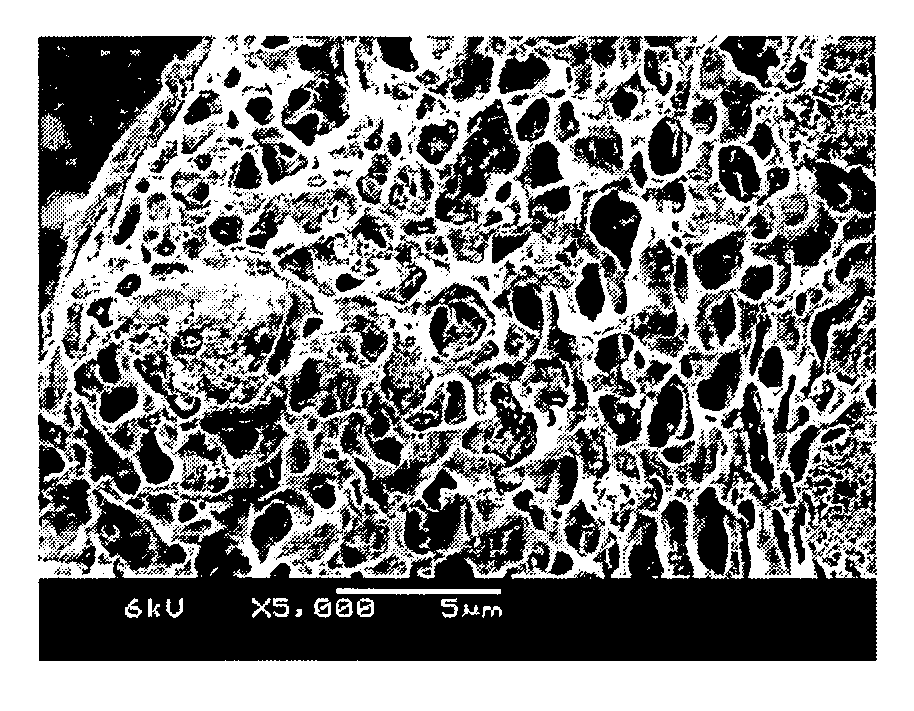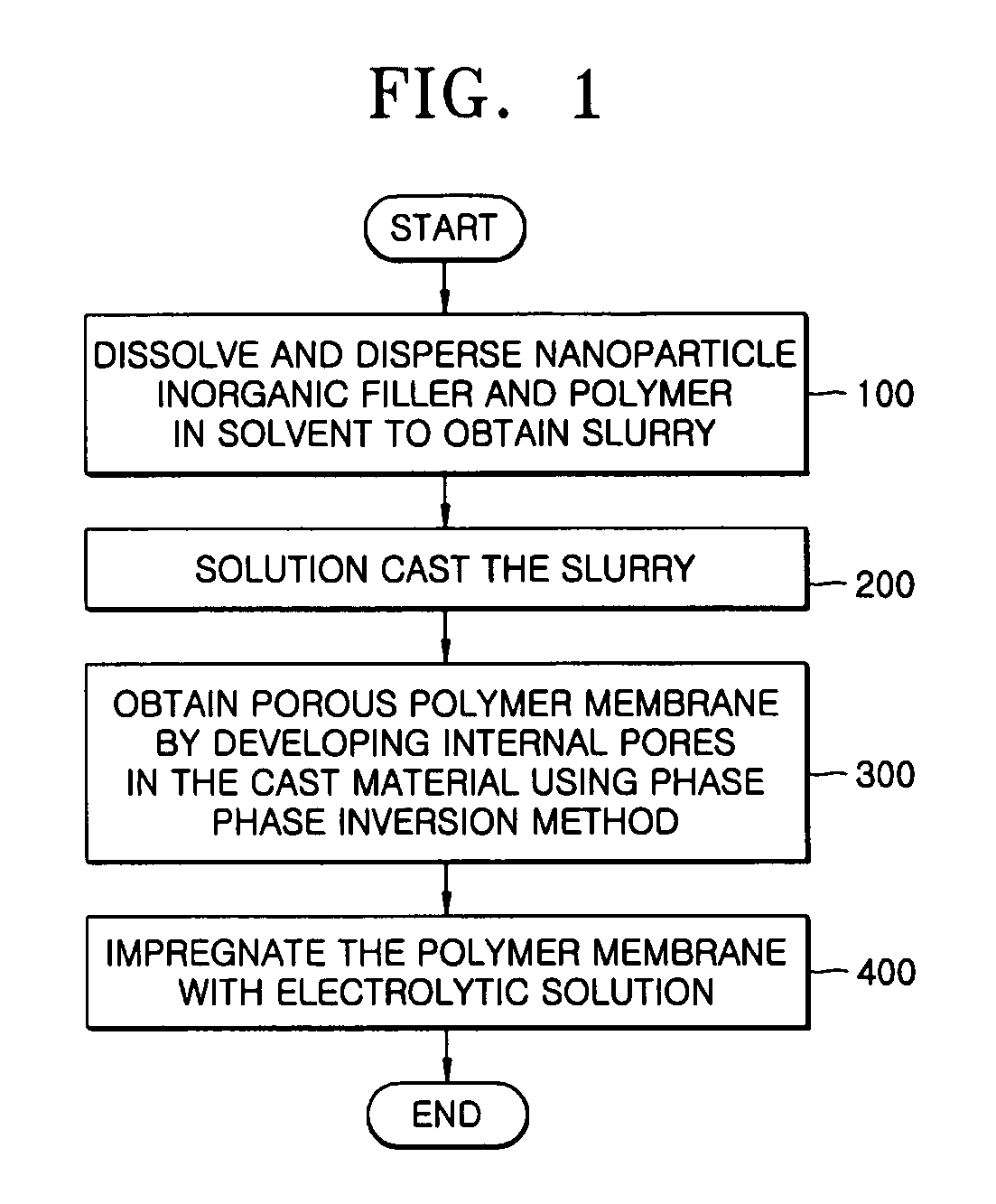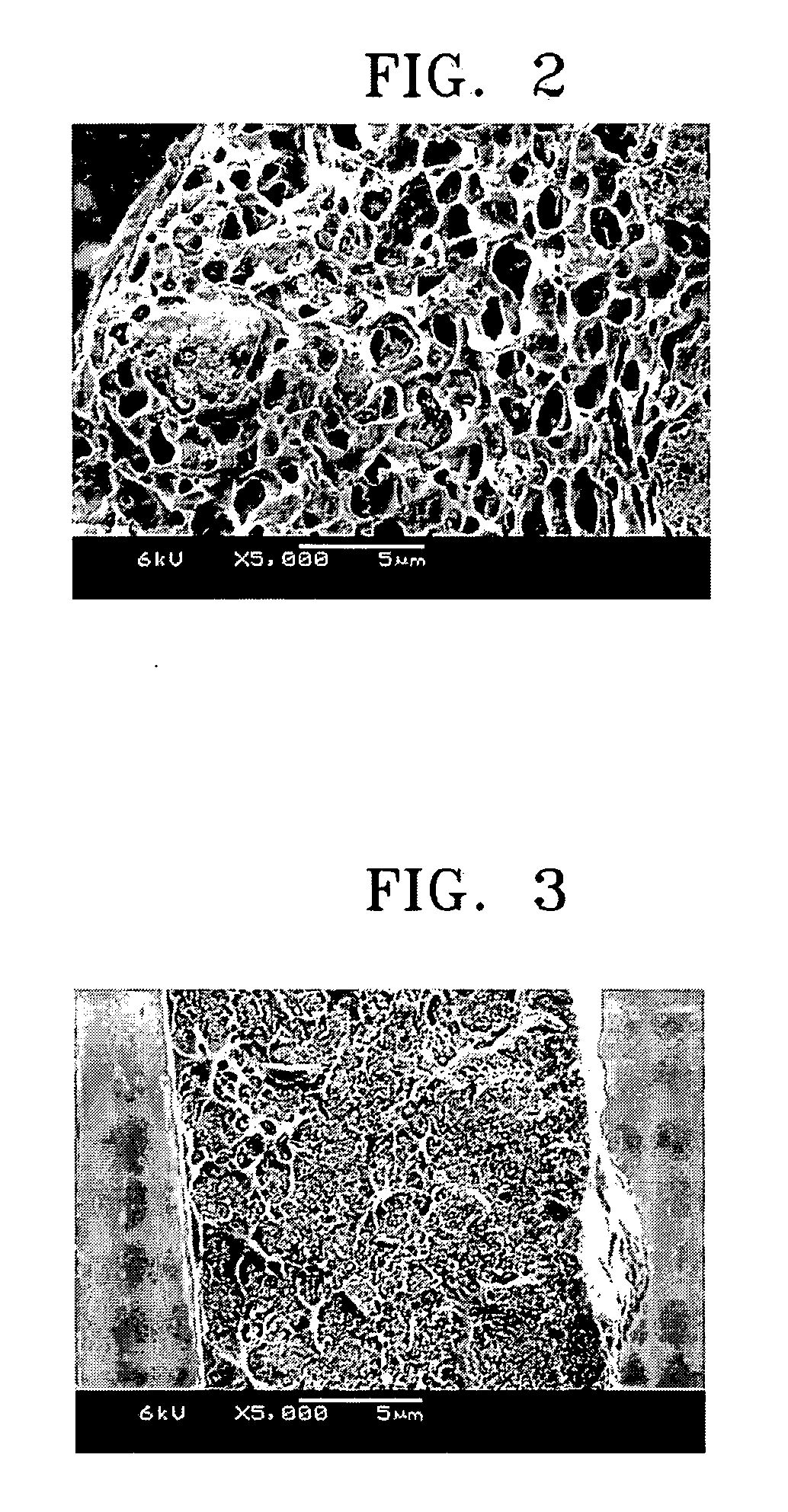Method of producing nanoparticle-filled phase inversion polymer electrolyte
a polymer electrolyte and nanoparticle technology, applied in the direction of membranes, non-aqueous electrolyte cells, cell components, etc., can solve the problems of inability to achieve interfacial resistance to lithium electrodes, lack of safety in electrolytic solutions, and interference with lighter battery production, etc., to achieve the effect of improving physical properties
- Summary
- Abstract
- Description
- Claims
- Application Information
AI Technical Summary
Benefits of technology
Problems solved by technology
Method used
Image
Examples
examples 1 through 7
[0051] Each of specimens according to Examples 1 through 7 described in Table 1 was prepared as follow. Silica nanoparticles (Cab-O-Sil TS-530, available from Cabot Co., U.S.A.) as an inorganic filler, in an amount described in Table 1, were added to a 100 ml glass sample bottle containing about 9 g of NMP as a solvent. Then, the silica nanoparticles were dispersed in the solvent using an ultrasonic wave generator set to an output amplitude of 35 W, with repeating cycles for 30 minutes, each cycle including application of the ultrasonic wave for 30 sec and stopping of the ultrasonic wave for 5 sec.
[0052] Next, 1 g of P(VdF-HFP) polymer powders having a content of HFP of 12 mol % (KynarFlex 2801, available from Atofina Chemical Corp., U.S.A.) was slowly added to the resultant dispersion and Zr-balls having a diameter of 5 mm were added in a content of 60% by volume or more based on the liquid phase, and then sealed and ball-milled at a speed of 500 rpm for 24 hours to obtain a slurr...
examples 8 through 14
[0056] Each of polymer electrolytes was produced using the same manner as in Examples 1 through 7, except that titania (PC-101, available from Titan Industry Co., Japan) was used in place of silica as a filler.
examples 15 through 20
[0058] Each of polymer electrolytes was produced using the same manner as in Examples 1 through 7, except that DMA was used in place of NMP as a solvent.
PUM
| Property | Measurement | Unit |
|---|---|---|
| diameter | aaaaa | aaaaa |
| temperature | aaaaa | aaaaa |
| thickness | aaaaa | aaaaa |
Abstract
Description
Claims
Application Information
 Login to View More
Login to View More - R&D
- Intellectual Property
- Life Sciences
- Materials
- Tech Scout
- Unparalleled Data Quality
- Higher Quality Content
- 60% Fewer Hallucinations
Browse by: Latest US Patents, China's latest patents, Technical Efficacy Thesaurus, Application Domain, Technology Topic, Popular Technical Reports.
© 2025 PatSnap. All rights reserved.Legal|Privacy policy|Modern Slavery Act Transparency Statement|Sitemap|About US| Contact US: help@patsnap.com



